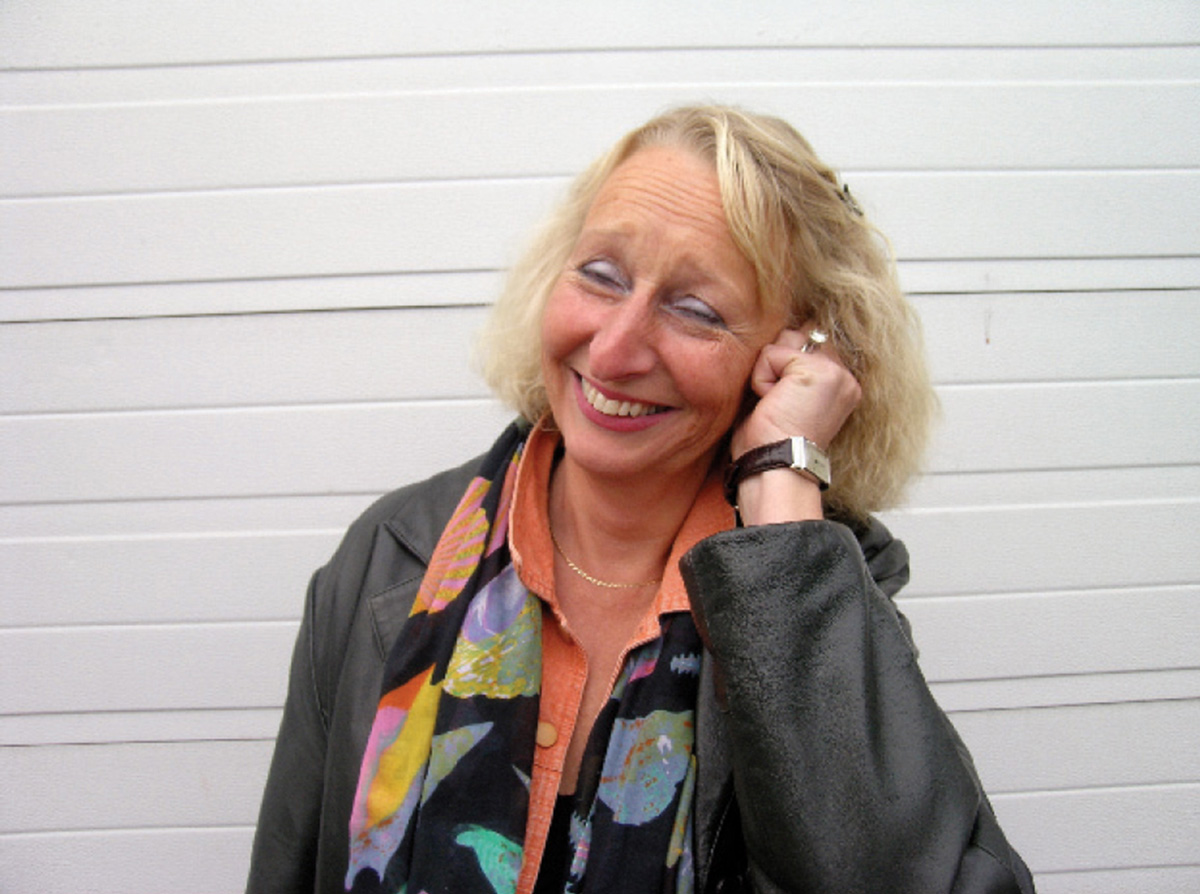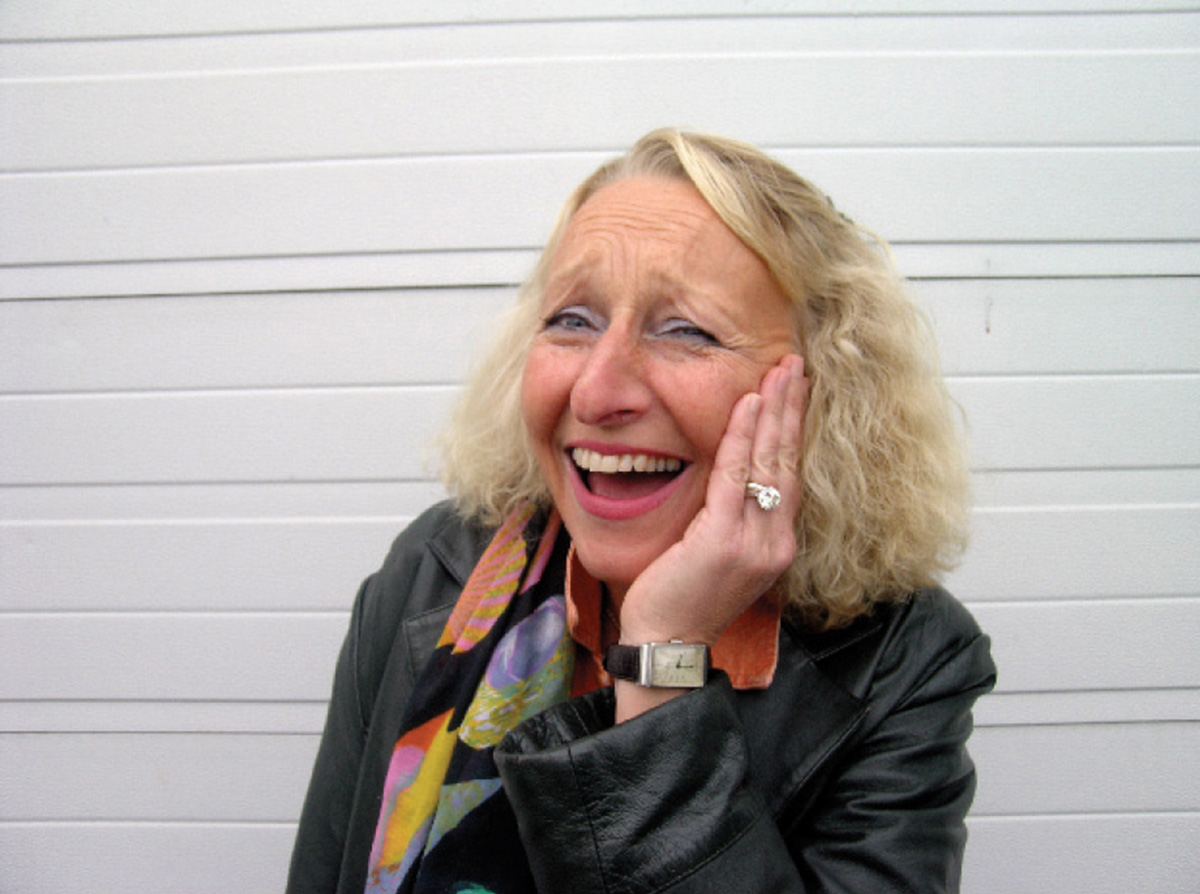The Practitioner: An Interview with Maud Skoog Brandin
Laughing without reason in Sweden
Mats Bigert and Maud Skoog Brandin
We do not laugh because we are happy—we are happy because we
laugh.
—William James
In March 1995, Indian doctor Madan Kataria read Norman Cousins’ book Anatomy of an Illness in which the author describes how laughing made him recover from an incurable disease of the spine. Kataria decided to go to a local park in Mumbai and speak to people there about starting a laughter club. Originally met with ridicule, the idea grew into laughter clubs across India and then abroad.
To begin with, all the participants would gather in a circle and each would take turns telling jokes. Sessions would last around twenty minutes. Partly in response to the sexist nature of many of the jokes, Dr. Kataria began to wonder if it was possible to laugh simply for the sake of laughing. Kataria’s technique of “laughter without reason” is now the organizing principle for over 2,500 laughter clubs around the world. Mats Bigert met with Maud Skoog Brandin, the woman who introduced the movement to Sweden.
Cabinet: What does a laughter instructor do?
Maud Skoog Brandin: A laughter instructor is like an aerobics instructor who’s leading a laughter session instead. Some people call it laughter yoga. To make it work, you have to be able to do it on command. So, for example, the laughter instructor says to everyone in the room, “Now we’re going to do the ‘cell phone laugh.’”
What does the cell phone laugh sound like?
You pretend to be on your cell phone and you laugh.
I see, so it’s not that you have to sound like a cell phone.
No, it’s a trick so that you can laugh on the street without being classified as a nutcase.


How did you become a laughter instructor?
I was feeling burned out in my job as the head of the Kalmar Community Council and was taking sedatives. One day I saw something on TV about these laughter clubs in India. I thought it sounded great, so I found Dr. Kataria online and contacted him. He invited me to come to India and study the techniques and I decided to go right away. I resigned from my job and after three weeks, I had finished my training and brought the laughter movement back to Sweden with me.
Is it possible to measure the positive effects of laughter?
One hundred laughs is the equivalent of a thirty-minute workout. Fifty years ago, the average person laughed eighteen minutes a day; today, that figure is down to six minutes a day. So it’s something we really need!
So we’re supposed to have it 300% worse than in the 1950s?
I don’t know but that’s a number that was cited during the humor convention in Basel.
The humor convention in Basel? That sounds made up!
No, it really exists. What distinguishes a laugh produced on demand from a spontaneous one?
Absolutely nothing. Laughter is a physical phenomenon. It is not the intellectual stimulation that makes a body release endorphins, serotonin, and dopamine, and creates a feeling of well-being and relaxation. It’s of no importance whether the laughter was triggered by someone slipping over a banana peel or if it’s put on.
The laughter that the laughter clubs promote is purely functional and doesn’t express any specific feeling. Spontaneous laughter is defined in accordance to the feeling that produced it, for example, scornful laughter, hysterical laughter, schadenfreude, and so on. Is there some specific category of laughter that you aim for?
The ironic thing is that you are naming different types of laughter with negative connotations. But they are just as beneficial physically as if the person had laughed in a hearty or friendly way. We try to infect the person with laughter. It’s the only kind of harmless infection that we have. My favorite laughs are the “ouch laugh” and the ”lion laugh.”


Does it always work? Have you ever not been successful with a group?
Yes, once, when I was invited to the Red Cross. It began with me having to have a sign language interpreter beside me who would translate for the deaf Red Cross workers, which meant I couldn’t move around the room. It’s absolutely necessary that you mingle with the participants to get the group going. When I later asked the person who’d invited me what they were all going to do afterwards, he said that they were about to find out who was going to be laid off.
Can you give the readers a short description of how they can adopt laughter therapy at home?
After breakfast, go to the bathroom and stand in front of the mirror. It’s going to take five to ten minutes, so prepare yourself mentally. Now think that you are going to take charge of your day; no one else is going to do that. Look yourself in the eyes and fill them with energy. It’s possible if you want to do it. If you don’t, it won’t work. Relax with a smile and stretch your body. Then begin with a “Ho ho ho, Ha ha ha” followed by a deep breath. Repeat this a few times. Then you can continue with some specific laughs. Energize your eyes, stick out your tongue, and do the “lion laugh.” Then you can simulate being at the dentist and do the “ouch laugh.” The “I told you so laugh” always works. Shake your finger at your mirror image and laugh, “Ho ho, ha ha ha!” End it with a crazy “elephant trunk laugh.” You’re guaranteed to feel better than if you’d spent the ten minutes looking at the news.
Maud Skoog Brandin introduced “laughter without reason” to Sweden.
Mats Bigert is one half of the artist team Bigert & Bergström and an editor-at-large at Cabinet. He lives in Stockholm.
Spotted an error? Email us at corrections at cabinetmagazine dot org.
If you’ve enjoyed the free articles that we offer on our site, please consider subscribing to our nonprofit magazine. You get twelve online issues and unlimited access to all our archives.